How to: Get your ducks in a row
February 3, 2021 •Kevin McSpadden

I have good news and bad news.
The bad news is that this article isn’t about rubber ducks, we just liked the picture and thought it would be nice to brighten up your screen.
The good news is that spring is coming and while it might feel like you’re slogging through the toughest lockdown yet, there’s good news on the horizon.
We know that retail and travel will recover.
Although the High Street may not look quite the same as before and brands have had to reassess and refocus, change can be a force for good. Look at the strides the retail industry has made in embracing ecommerce and digital channels – customers who had never even considered buying online are now doing so habitually and they’re still engaging with and loving their favourite brands, just in a different way. And stores will come back too; their function and feel will be different but that’s no bad thing. Jobs will be recovered, staff will upskill, and the new store experience will feel like a breath of fresh air to customers when they come back to cities and town centres.
But how will those customers behave over the coming months? That depends on many different factors, some of which we can control and some we can’t.
As a business leader, you need to see the bigger picture and control what you can.
Your business has changed a lot in the past 12 months and you’ve probably made changes that you would never have thought possible. Now is the time to assess those changes and consider your broader business plan.
After periods of intense change, brands can sometimes get lost in the weeds and focus can shift from what’s important to what’s urgent. They’re rarely the same thing.
At the most basic level, young brands need to focus on acquiring new customers and established brands should work on retaining the customers they already have.
How you put this into practice depends on your unique customer economics: how much you can afford to spend to acquire a new customer, how long you can wait to break even, and where you should invest your marketing budget so you’re confident you’ll see the right return.
I’ve been working with retail brands for over 18 years and, over that time, I’ve worked out what brands really need to get right.
At the heart of that is the customer economics model. This is a business model that starts with the customer and works upwards. Once you know how much a customer will spend, you can work out your allowable cost per acquisition and how much you can afford to spend on marketing to reach your revenue targets. Whether you’re a new brand or a seasoned retailer, this is the golden key that unlocks growth and is the one thing that we focus on with all our clients.
I know it can be hard to know what’s really important when so much is vying for your attention. That’s why I’ve put together a simple list of the 8 tasks I would focus on if I were the CEO of an ambitious retail brand. It’s all designed to give you simple, actionable steps to take to achieve growth – and the customer is at the heart of everything:
1. Build your sales plan with customer economics in mind
Customer behaviour is far more predictable than market dynamics. Customer metrics like retention rate and spend per customer are incredibly stable – they give you a solid foundation to project and plan future revenues.
Start at the end: establish your revenue target and work out exactly how many customers you need to recruit to get you there. This gives you a simple metric that you can work with – don’t over-complicate it.
2. Establish your allowable cost to acquire a new customer
A customer economic model liberates the business and helps you understand the potential of your online channels. By understanding the current and future value of your customers and establishing your cost to serve, you can determine an allowable cost to acquire that’s based on real figures, not educated guesses. Because an educated guess is just that: a guess.
When you understand how marketing investment will translate into commercial performance, you and your team will have the confidence you need to invest in your performance marketing. And right now, confidence is what you need.
3. Get board alignment
By their nature, boards bring together diverse experience but it can be a challenge to get everyone onto the same page. Alignment (or perhaps enlightenment!) comes through a real understanding of what a customer is worth and that is influenced by business actions. Hypothetical or gut arguments then give way to reasoned, financially-sound business cases that enable different teams to collaborate using the same language and with the same end-goal.
4. Measure what matters
Most retailers are awash with data. Customer economics cuts through the noise and focusses on critical metrics like customer lifetime value and incremental cost per acquisition. At the very least, this means Finance and Marketing are in sync but the real power comes from linking all departmental KPIs back to your core business metrics. When a team understands the impact their activity has customer conversion, returns, or repeat order rate, you give them personal accountability for their actions. And let’s not forget: it’s the incremental results that matter, not the attributed results.
5. Break down siloed thinking
Retailers typically collect and use customer data and metrics within just one or two functional silos while KPIs for other departments tend to be more internal-looking and aren’t related to customer performance. Think about it this way: when you measure your customer service agents based on the future value of the customers they served, you can find those who are most efficient. The most successful disruptors have customer economics in their DNA and empower every team with the insights they need to drive those few metrics that really matter.
6. Master digital platforms
The capture and use of personal data online is a moving feast, held in the balance by innovation and increasing regulation. Three things will continue to hold true however:
-
- Your use of 1st party data (structured according to your customer economics) will be pivotal to your success.
- Your technical setup (from pixels to audiences to product feeds) must give the AI what it needs to give you visibility in the right auctions and for the right prospects and customers.
- If you don’t understand your customer economics, you will set the wrong objectives, bid the wrong amounts, and end up with the wrong customers. It’s that simple.
7. Simplify
And on that note… Complexity creates barriers and hobbles agility. The pace of change will not slow down so you need a simple framework that enables you to adapt and keep adapting. Retail businesses generate a large amount of data both instore and online but, as I said, only a few metrics really matter. A lack of knowledge of what good looks like, combined with over-complicated structural and technical hurdles, mean that few brands are able to build a pragmatic, joined-up view of each customer and how their behaviour influences the bottom line.
8. Serve customers seamlessly across channels
A recent study by Kantar and Facebook revealed that half of consumers globally say that a good omnichannel experience is very important when choosing where to shop. Mature retailers with complex organisations are struggling to compete with the established online players because they didn’t design this in from the start. While this is being tackled by digital transformation teams, your customer economic model can give you a head start to model the opportunity and prioritise your efforts. It will also measure how you did against expectations.
I hope this has challenged you to better understand and apply your customer economics – I have seen it at work across over 200 brands, and it is transformative.
If there’s anything here that you’d like to hear more about, drop us a line at hello@more2.com and we’ll have a chat – or if you’re Zoomed out, we’ll go old school and write you a letter instead.
Thanks for reading!

